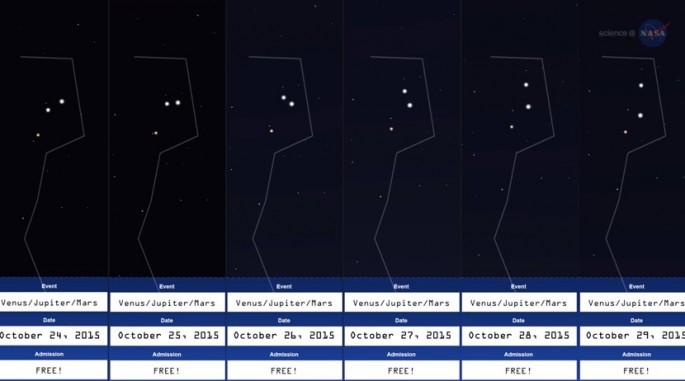This week, an hour before dawn is the best way to view all the bright planets in the solar system located in the eastern sky. Jupiter and Venus can be seen in the early morning sky along with Mars beginning Monday where the trio of planets appear to huddle up closer together towards the end of the week.
The three sparkling alien worlds will now align into a tight triangle on Wednesday morning. In order to view this planetary conjunction, there will be no special equipment required as Venus and Jupiter are some of the brightest cosmic objects in the night skies, where they can also be mistaken for twinkling distant stars.
Weather permitting, amateur and professional sky watchers all around the world should be able to get a glimpse of Jupiter and Venus. Venus will appear almost more than one degree from Jupiter in the night sky which means that the two gleaming planets will be spectacularly close to each other.
NASA recommends to use an average set of binoculars that can magnify a part of the sky up to six to seven degrees to achieve an amazing view of the three planets. Backyard sky viewing can be complete with just a reclining chair and a regular set of binoculars this week.
NASA also says that Jupiter's four moons will be visible for viewing where Io, Europa, Callisto and Ganymede can be captured by a steady hand or a tripod. NASA also reveals that the moon configurations will be different for each morning this week.
Venus will also appear brighter than Jupiter even if Jupiter is by far larger in size but due to its distance from Earth, Venus is more visible than the gas giant. Mars will shine the least of the three planets since it is darker in color, possessing a deep red hue but it will be easy to spot the Red Planet near Venus and Jupiter.
Next month will also bring more cosmic alignments as Jupiter will be above Mars and Venus on November 6 over a crescent moon where the moon will appear below near Venus on November 7. When it comes to shooting stars, the Leonid meteor shower will also peak by mid November for an ultimate stargazing experience.



























